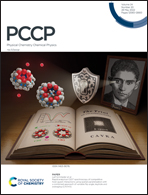Light modulation based on the enhanced Kerr effect in molybdenum disulfide nanostructures with curved features†
Abstract
A novel type of molybdenum disulfide (MoS2) nanoparticles (NPs) was chemically synthesized, which possessed curved features with three-dimensional (3D) freedom compared with planar two-dimensional (2D) materials. Due to the introduction of curved features, the synthesized NPs exhibited a strongly enhanced nonlinear refractive index (n2 ∼ 10−5 cm−2 W−1) and third-order susceptibility (χ(3) ∼ 10−7 esu), which were experimentally verified by the spatial self-phase modulation effect in the visible wavelength range. Both the nonlinear parameters were two orders of magnitude higher than their planar MoS2 nanostructure counterparts. In addition, the relative change of the effective nonlinear refractive index Δn2/n2 was found to be distinctly dependent on the intensity of the applied electromagnetic field. Moreover, an all-optical modulation was experimentally realized based on the spatial cross-phase modulation effect. Our results demonstrate planar MoS2 materials with 3D features as potential candidates for next generation all-optical applications and open a substantial approach for the design of efficient nanomaterials with favorable optical nonlinearity.

- This article is part of the themed collection: 2022 PCCP HOT Articles


 Please wait while we load your content...
Please wait while we load your content...